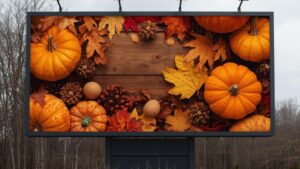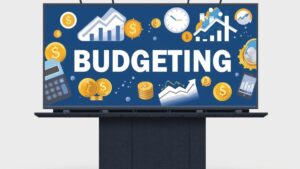How Outdoor Ads Shape Consumer Decisions in Shopping and Entertainment Districts
Billboards play a crucial role in influencing where people shop, dine, and spend their free time—especially in high-traffic shopping centers, sports arenas, and nightlife districts. Whether it’s a luxury retailer attracting high-end shoppers, a restaurant enticing theatergoers, or a concert venue building excitement, outdoor ads have the power to steer consumer behavior in real time.
This blog explores how billboards impact purchasing decisions, the best strategies for placing outdoor ads in shopping and entertainment hubs, and how businesses can drive engagement and revenue through smart outdoor advertising.
Why Billboards Are So Effective in Shopping and Entertainment Districts
Outdoor ads in commercial and entertainment zones aren’t just about branding—they directly influence consumer actions.
Key reasons why billboards work in retail and entertainment districts:
✔ Proximity to the Point of Purchase – Shoppers and eventgoers are already in a spending mindset, making them more likely to act on an ad.
✔ High Visibility & Repetition – Many shopping areas have foot and vehicle traffic throughout the day, ensuring repeated exposure.
✔ Influence Over Impulse Purchases – Ads for food, drinks, and retail deals can immediately drive foot traffic.
✔ Extended Dwell Time – Pedestrians and slow-moving traffic spend more time near ads, increasing engagement.
By placing high-impact billboards in shopping and entertainment hubs, brands can connect with consumers at the perfect moment—when they’re ready to make a purchase or experience something new.
Where Billboards Have the Greatest Impact on Consumer Behavior
Not all billboard placements are equally effective. In shopping and entertainment districts, strategic placement is key to maximizing visibility and conversion rates.
1. Shopping Malls and Retail Districts
Malls and shopping centers attract thousands of consumers daily, making them prime real estate for billboard advertising.
Best billboard placements for retail influence:
✔ Mall entrances and exits – First and last impressions matter.
✔ Parking lots – Shoppers see ads before making purchase decisions.
✔ Walkable retail districts – Billboards at intersections and plazas influence foot traffic.
Best for:
✔ Clothing and accessory brands promoting seasonal trends.
✔ Tech and electronics stores showcasing new product launches.
✔ Beauty and personal care brands advertising limited-time promotions.
Example: A billboard for a luxury watch brand placed near an upscale shopping center reinforces exclusivity and attracts high-income consumers.
2. Sports Arenas and Concert Venues
Before and after an event, massive crowds flood surrounding areas, making billboards near sports stadiums and concert venues prime spots for advertising.
Best billboard placements for event-goers:
✔ Near venue entrances and exits – Catching consumers before and after events.
✔ Along pedestrian walkways – Capturing foot traffic in entertainment zones.
✔ Near parking lots and transit stations – Reaching attendees as they arrive or leave.
Best for:
✔ Bars and restaurants promoting pre- and post-event specials.
✔ Ride-share and transportation services advertising convenience.
✔ Merchandise and apparel brands selling team or artist-related gear.
Example: A sports bar near a stadium uses a billboard reading:
“Game Night Specials – Walk Over After the Final Whistle!”
This taps into real-time decision-making as fans leave the game looking for a place to celebrate.
3. Nightlife and Entertainment Districts
Billboards in high-energy nightlife areas cater to a social, experience-driven audience—people looking for food, drinks, live music, and entertainment.
Best billboard placements for nightlife engagement:
✔ Along main nightlife streets – High pedestrian traffic ensures visibility.
✔ Near parking garages and transit stops – Capturing consumers arriving at entertainment hubs.
✔ On rooftops and digital screens – Large-scale impact in crowded nightlife zones.
Best for:
✔ Bars, clubs, and lounges promoting events and specials.
✔ Theaters and comedy clubs advertising upcoming performances.
✔ Casinos and resorts targeting high-energy nightlife audiences.
Example: A nightclub places a dynamic digital billboard outside a busy entertainment district:
“Tonight: Live DJ + VIP Specials – Just Two Blocks Away!”
This creates immediate interest for people already looking for their next destination.
Best Strategies for Billboards in Shopping & Entertainment Districts
For billboards to successfully drive consumer action, advertisers must focus on strategic messaging, design, and placement.
1. Use Urgency to Drive Immediate Action
Billboards in high-traffic commercial zones should encourage instant engagement.
✔ Time-sensitive language (e.g., “One-Day Sale – Ends Tonight!”)
✔ Directional cues (e.g., “Turn Left for Best Tacos in Town!”)
✔ QR codes for instant digital engagement
🚫 What to avoid:
✖ Long-term awareness campaigns that don’t prompt immediate action.
2. Design for Quick, High-Impact Impressions
✔ Bold, high-contrast colors stand out in busy cityscapes.
✔ Minimal text (under seven words) ensures instant readability.
✔ Large, high-quality visuals grab attention fast.
🚫 What to avoid:
✖ Complicated visuals that require too much attention in fast-moving environments.
3. Consider Digital Billboards for Dynamic Messaging
✔ Rotating ads throughout the day target different audiences (e.g., morning coffee ads vs. evening happy hour promotions).
✔ Live updates for events and promotions keep messaging fresh.
✔ Interactive elements like countdown timers create anticipation.
🚫 What to avoid:
✖ Static messaging in fast-changing event and shopping districts.
4. Align Messaging with Consumer Mindsets
The best billboard ads align with what people are already thinking about in that moment.
✔ Shoppers want deals and exclusive finds – Use messages like “Limited Edition Sneakers – Just Released!”
✔ Sports fans are celebrating or commiserating – Ads like “Win or Lose, Drinks Are Half Off Tonight!” resonate.
✔ Concertgoers are in an experience-driven mood – Promote experiential activities like VIP lounges or after-parties.
🚫 What to avoid:
✖ Generic messaging that doesn’t match the consumer’s mindset at that location.
Common Mistakes in Billboard Advertising for Shopping & Entertainment
🚫 Lack of a Call to Action – If an ad doesn’t tell people what to do next, they won’t take action.
🚫 Ignoring the Consumer’s Mood & Intent – Shopping and entertainment audiences are experience-driven—ads should reflect that.
🚫 Choosing the Wrong Location – A billboard too far from the venue or shopping area won’t drive foot traffic.
🚫 Too Much Information – If the message isn’t clear in three seconds, it’s ineffective.
✔ Solution: Simple, bold, and location-specific messaging with a clear CTA.
Turning Billboards into Consumer Decision Drivers
Billboards in shopping centers, stadium districts, and nightlife areas do more than build awareness—they directly influence consumer behavior in real time. When strategically placed and designed, they can increase foot traffic, drive purchases, and enhance the customer experience.
Effortless Outdoor Media specializes in billboard campaigns for shopping, dining, and entertainment districts, helping brands connect with consumers at the right place and the right time.
Want to use billboards to drive sales and engagement?
Contact Bill Hobbs at Effortless Outdoor Media today to create a high-impact outdoor advertising campaign in top shopping and entertainment hubs.
“If you are in need of expert advice and knowledge about billboards in the Atlanta market, Bill Hobbs brings tremendous value.” | From Dan Jape, Owner of RELIABLE HEATING AND AIR.



